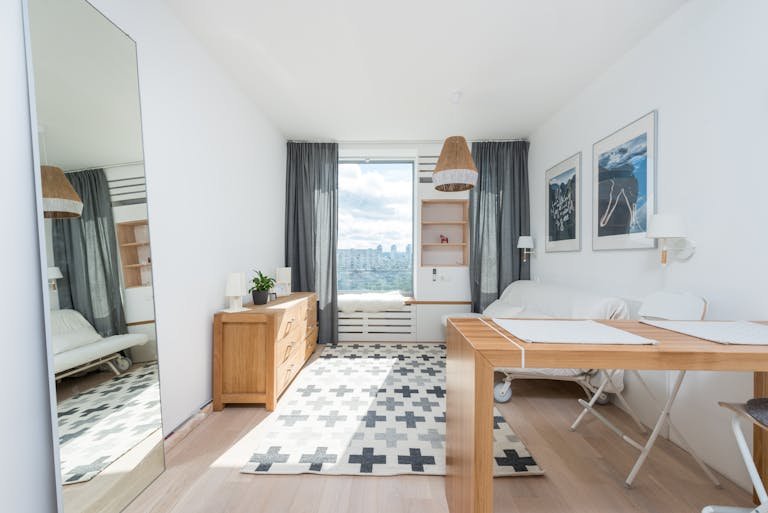Comprehensive guide to Breathwork techniques for stress relief

Our modern grind culture, “crushing it” mentality, and overall toxic hustle culture is a common reason why life has become so stressful for many people. Not to mention the rising cost of living while trying to navigate the historical lack of salary increases. Then, as you observe these scenarios play out on social media, with people constantly showing off their luxury lifestyles, it can intensify feelings of inadequacy and lead to more stress.
Whatever your reasons for feeling stressed and overwhelmed are, there are effective breathwork techniques that you can utilize to reduce those stress levels. This guide will explore various breathwork techniques that you can incorporate into your everyday routine to promote relaxation and inner peace.
Stress effects on the body and mind:
First, let’s talk about the impact of stress on our bodies and minds. Chronic stress can lead to a gamut of health conditions, including but not limited to anxiety, depression, and insomnia. Many physical signs of stress manifest in the body such as physical fatigue (always feeling drained) due to lack of sleep which is due to stress, muscle aches and pains, anxiety attacks, high blood pressure and of course, difficulty breathing normally.
Mental side effects due to chronic stress include difficulty concentrating on tasks you had no problems with previously (mental fog), constant feelings of anxiety or nervousness, and feeling irritable with yourself or others for no reason.
Breathwork techniques for stress relief offer an approachable method to the above issues, prompting the body’s relaxation response and countering the effects of stress while promoting feelings of calm and well-being. Let’s take a look at some of the best breathing techniques to alleviate stress below.
Best breathwork techniques for stress relief
Deep Breathing – great for those beginning breathwork:
Deep breathing involves slow, deliberate inhalations and exhalations, focusing on fully expanding the lungs and engaging the diaphragm. Practicing deep breathing for several minutes can calm the nervous system and promote relaxation.
4-7-8 Breathing Technique:
All the rage on Reddit, the 4-7-8 breathing technique involves inhaling for a count of four, holding the breath for a count of seven, and exhaling for a count of eight seconds. This method of breathing helps regulate the breath and induce a state of deep relaxation for better sleep. The 4-7-8 breathing technique is based on pranayama yogic breathing practices originating in India.
Square breathing for stress:
Square breathing, also known as box breathing, entails closing your eyes, inhaling through the nose, then holding the breath, slowly exhaling, and holding the breath again, each for a count of four seconds. If at first you feel lightheaded, only repeat once and slowly build up the reps to 1-2 times over the course of a few days until you get the hang of it.
Make sure that you’re taking deep breaths – your stomach should be rising and falling with each inhale and exhale – as opposed to shallow breaths. Like other breathwork techniques,square breathing for stress can help quiet the mind and induce a feeling of calm and relieve stress.
Alternate Nostril Breathing or Nadi Shodhana:
Nadi Shodhana or alternate nostril breathing is another yogic breathing method that involves alternating the flow of breath between the left and right nostril.
How to alternate nostril breathing the simple way: Start by inhaling through the left nostril while covering the right one with your right thumb, followed by exhaling through the left nostril. Next, inhale through the left again, but this time, cover the left nostril as you exhale through the right nostril. Repeat this process by alternating nostrils, focusing on relaxing and mentally uncluttering your senses.
Sama Vritti or Equal Breathing:
Equal breathing, also known as Sama Vritti, is a simple yet effective technique for stress relief. Begin by finding a comfortable seated position and closing your eyes.
Inhale slowly through your nose for a count of three or four seconds, allowing your abdomen to rise as you fill your lungs with air. Then, exhale through your nose for another three or four-second count, feeling your abdomen fall as you release the breath.
Practice the Sama Vritti technique for a couple of minutes, gradually increasing the duration of seconds for your inhales/exhales as you become more comfortable.
The key is to maintain an equal duration of time for both the inhalation and exhalation.
Like other breathwork techniques, equal breathing can help calm the nervous system, reduce stress, and improve overall well-being.
Lion’s Breath or Simhasana:
Lion’s breath, or Simhasana, is a unique breathwork technique that involves forceful exhalation and vocalization. Begin by sitting comfortably with your spine tall and your hands resting on your knees. Inhale deeply through your nose, then open your mouth wide and stick out your tongue, exhaling forcefully with a “ha” sound, as if you were roaring like a lion.
As you exhale, simultaneously gaze upward towards the space between your eyebrows. This powerful exhalation helps release tension in the chest and face, while the vocalization can help relieve stress and improve vocal flexibility. Lion’s breath is particularly beneficial for reducing anxiety and promoting a sense of release and liberation.
Bee Breath or Bhramari:
Bee breath, or Bhramari, is a relaxing breathwork technique that involves making a humming sound on the exhale.
How to do bee breath: Begin by finding a comfortable seated position and closing your eyes. Inhale deeply through your nose, then exhale slowly while making a low-pitched humming sound, like the buzzing of a bee.
Feel the vibration of the sound reverberating throughout your body, soothing your nerves and calming the mind.
Repeat this process several times, focusing on the sensation of the humming sound and allowing yourself to relax deeply with each exhale. Bee breath is particularly effective for reducing stress, anxiety, and tension, promoting a sense of inner peace and tranquility.
Skull Shining Breath or Kapalabhati:
Skull shining breath or Kapalabhati, is an energizing breathwork technique that involves rapid, forceful exhalations followed by passive inhalations.
Begin by sitting in a comfortable position with your spine tall and your hands resting on your knees. Take a deep breath in through your nose, then forcefully exhale through your nose, contracting your abdominal muscles to push the air out in short bursts.
Allow the inhalation to happen naturally, without effort or force. Repeat this process rapidly, maintaining a steady rhythm and focusing on the forceful exhalations.
Kapalabhati breathing technique increases oxygenation of the blood, stimulates the nervous system, and clears the mind of stagnant energy and toxins.
It’s an invigorating practice that can help improve focus, concentration, and mental clarity, making it an excellent choice for reducing stress and boosting overall energy levels.
How do breathing techniques help with stress?
Incorporating breathwork techniques for stress relief into your everyday rituals can have a profound effect on your well-being. When you engage in intentional breathing exercises, you initiate a relaxation response in your body by triggering your parasympathetic nervous system.
Taking deeper, abdominal breaths is a fundamental aspect of breathwork for stress relief. When you breathe deeply into your abdomen, you activate the diaphragm muscle, which signals to the body that it’s safe to relax.
This deep breathing technique sends a powerful message to the brain, prompting it to release neurotransmitters such as serotonin and GABA, which are associated with feelings of relaxation and well-being.
Practicing breathwork can help break the cycle of shallow, anxiety-induced breathing that often accompanies stress. By focusing on slow, deliberate breaths, you disrupt the pattern of rapid, shallow breathing that can exacerbate feelings of anxiety and tension.
Although practicing breathwork techniques for stress relief can be incredibly helpful it’s not for everyone. You should be mindful of any pre-existing medical conditions or respiratory issues that may affect your ability to engage in certain techniques. People with conditions such as asthma, chronic obstructive pulmonary disease (COPD), or cardiovascular problems should first consult with a healthcare professional before starting a breathwork practice.
Additionally, some may experience lightheadedness, dizziness, or general discomfort when first starting breathwork exercises, especially if they are not accustomed to deep breathing. If you experience any adverse reactions during practice, such as hyperventilation or panic, stop immediately and return to normal breathing. Begin with shorter sessions and gradually increase the duration and intensity of your practice as you become more comfortable.
Incorporating Breathwork into Your Daily Routine:
Now that you’re familiar with some of our favorite breathwork techniques for stress relief, try incorporating them into your daily routine for everyday relaxation and calm. You can practice breathwork when you first wake up, throughout the day, whenever you get a break, or as part of your bedtime relaxation routine.
Experiment with different techniques to find what works best for you, and remember to prioritize self-care and well-being in your journey towards a more stress-free life.






